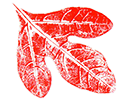Dragonflies of various different species are common visitors to flower gardens and patches of tall grass, especially if there is water nearby. (When resting, dragonflies always hold their wings flat and perpendicular to their bodies; damselflies always hold their wings straight up behind them.) One of our largest and most common dragonfly species is the green darner (Anax junius).

Green darner dragonflies can be almost 3 inches long with wingspans almost as long. Green darners are beautiful dragonflies with clear to slightly amber wings. Their thoraxes are bright, metallic green and they have a black and blue spot in front of their eyes. The color of the abdomen typically varies by sex. Most adult male green darners have a blue abdomen that can turn deep purple in cool weather. Most female green darners and most immature male green darners have a brownish abdomen.
These beautiful dragonflies can be found throughout the continental U.S., southern Canada, and Mexico, as well as, a few other places across the globe. One really interesting fact about green darners is that in North America part of the population will migrate, much like monarch butterflies, while part of the population remains relatively stationary. The green darner migration can be over 800 miles each way, with the average migration distance being 500-600 miles. Amazingly, these dragonflies can fly as much as 87 miles in a day. Like monarchs, the green darner migration takes place over multiple generations.
The green darner dragonfly migration begins in Mexico and the southern U.S. Early in the spring, some adult green darner dragonflies will leave their overwintering sites and migrate north as far as southern Canada. The migration can be spread out over several weeks with long bouts of travel interspersed with stops to feed and refuel. Once they reach their northern destinations, the migratory dragonflies will mate and lay eggs. The dragonflies that hatch from those eggs are the ones that will then migrate south again in the fall.
Like the spring migration, the fall migration can take several weeks. Once they reach their southern destinations, this second generation of dragonflies will mate and lay eggs which will result in the generation that moves north again during the following spring. However, in all of these locations there are resident populations of green darners as well as the migratory populations. (No one is really sure what determines which population an individual dragonfly will belong to. Some researchers speculate that it is a genetic trait, but that hasn’t been proven.)

Adult green darners only live a few weeks to a month. They are voracious predators that will catch and eat a large variety of insects during their adult lives. After mating, the female will lay her eggs on submerged vegetation in a nearby pond, swamp, slow moving stream, etc. Water sources without fish are preferred egg laying spots because that greatly reduces the potential predators that the larva will have to avoid.
The eggs will hatch in about a week. The larva that hatches from the egg looks more like a miniature b-rate horror movie monster than a dragonfly. Like their parents, the larvae are fierce predators and prey on other aquatic invertebrates, tadpoles, salamander larva, and even small fish if they are present.
How long the larva stay as larva depends on whether they are part of the migratory or resident population. If the larva is part of the migratory population, then 3-5 months after hatching it will crawl up onto vegetation sticking out of the water and molt into a mature dragonfly. If the larva is part of the resident population, then it may overwinter as a larva and thus remain a larva for almost a year.
The spring green darner migration tends to be relatively disperse. However, the fall green darner migration can result in “swarms” of hundreds of dragonflies migrating together. The migration season usually starts sometime around mid-August and can last through October. So as you are out enjoying the beautiful weather this fall, you might want to take a few minutes to look up. If you see a bunch of large dragonflies all moving in a generally southward direction, then there’s a good chance that you’ve found a swarm of migrating green darners.

This article was part of Shannon’s original Kentucky Pollinators and Backyard Wildlife blog which evolved into the blog for Backyard Ecology.

Backyard Ecology: Exploring Nature in Your Backyard
Nature isn’t just “out there.” It’s all around us, including right outside our doors. Hi, my name is Shannon Trimboli, and I am the host of Backyard Ecology. I live in southcentral Kentucky and am a wildlife biologist, educator, author, beekeeper, and owner of a nursery specializing in plants for pollinators and wildlife conservation. I invite you to join me as we ignite our curiosity and natural wonder, explore our yards and communities, and improve our local pollinator and wildlife habitat. Learn more or subscribe to my email list at www.backyardecology.net.

Leave a Reply